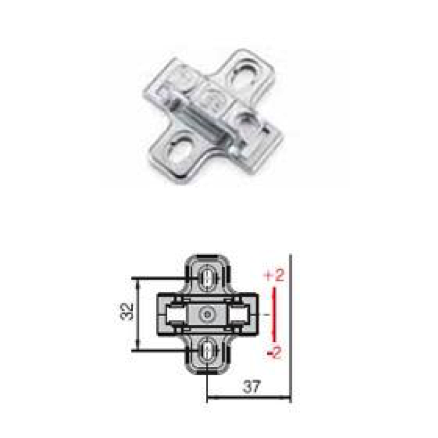How To: Measuring and Fitting Our Kitchen Hinges
Looking to replace a hinge? Head to our Hinge Helpdesk to find your best option.
This How To Guide will cover some general measurements for our hinges and how you can fit them. These are of course only guidelines, so we would suggest checking the specific product page in order for instructions specific to that hinge.
- Number of Hinges
The first thing to consider is the number of hinges you’ll need, which will depend on the size of the door. The diagram below will point you in the right direction.

- Drilling the Hinge Hole on the Door
Once you’ve established the number of hinges you’ll need, the next step is checking the diameter of the hole in the door that the current hinge sits in. Usually these are either 26mm, 35mm or 40mm.
Installing a new hinge? You’ll need purchase one of our Hinge Hole Cutters (available in all three sizes above).
- Drill a correctly sized hole on the door using one of our hole cutter attachments.
- You’ll need to measure 21.5mm inwards from the edge of the door, which will leave the hole 4mm from the edge of the door.
- The hole will then need to be 12mm deep for the hinge cup to sit flush.
- When placing the hinge into the cup hole, ensure to insert the screws so that it is fully attached.
PLEASE NOTE: Measurements for our 26mm and 40mm cup hole hinges may vary.

- Fitting the Mounting Plate
Full & Half Overlay hinge applications - the mounting plate hole positions should be 37mm in from the front edge of the cabinet side, and the vertical centres between the two plate holes should be 32mm apart.
Inset hinge applications - the mounting plate hole positions should be 37mm + door thickness + 1mm for the door to be flush with the front edge of the cabinet side, and the vertical centres between the two plate holes should be 32mm apart.

- Attaching the Hinge to the Mounting Plate
Clip-On Hinges - simply line the hinge up with the mounting plate and push it on, it should then click once it has connected. Repeat this with all of the hinges on the door, but bear in mind the position of other hinges further down. TIP: Line all of the hinges up before clipping the first one on.

Side-On Hinges - position the hinge on top of the mounting plate before securing it with the screw on top. Again, repeat this action with all of the hinges and line them all up before applying the first.

- Vertical, Lateral and Horizontal Adjustment
If the door is not lining up with the carcass or other doors as you would like, make use of the hinge’s Vertical Adjustment. This will allow you to move the door up and down by 2mm either way in order to line it up. There will be a screw to do this on the hinge. A Lateral Adjustment will also offer the same function.
Horizontal Adjustment is achieved by altering the hinge in order to move the door in and out - so that the door aligns with any others on the cupboard. As with Vertical and Lateral, you’ll find a screw to do this on the hinge.

